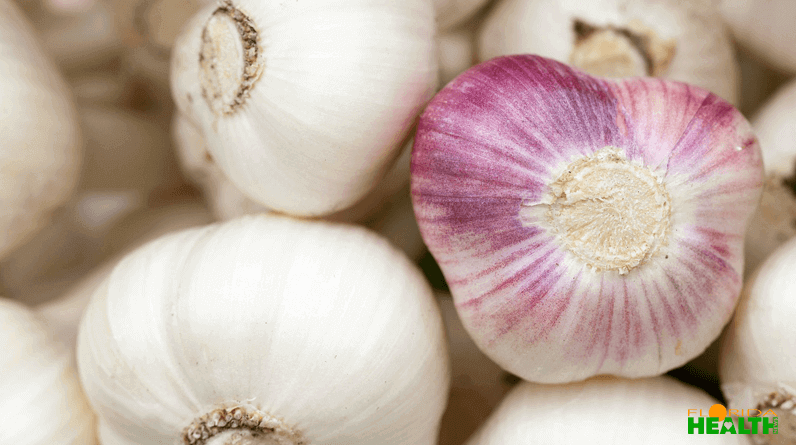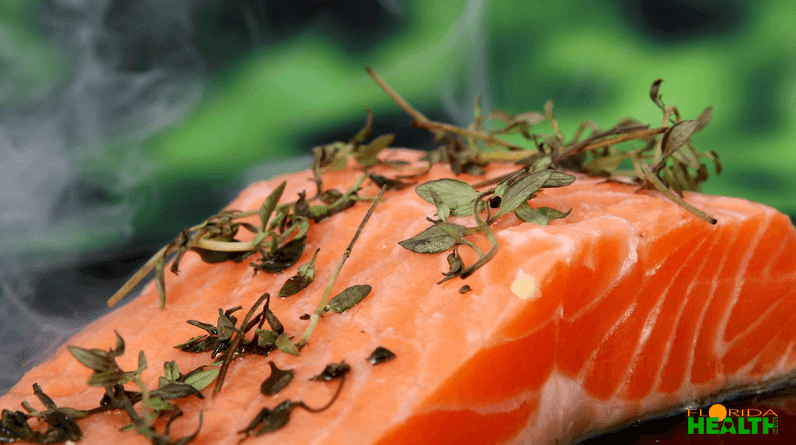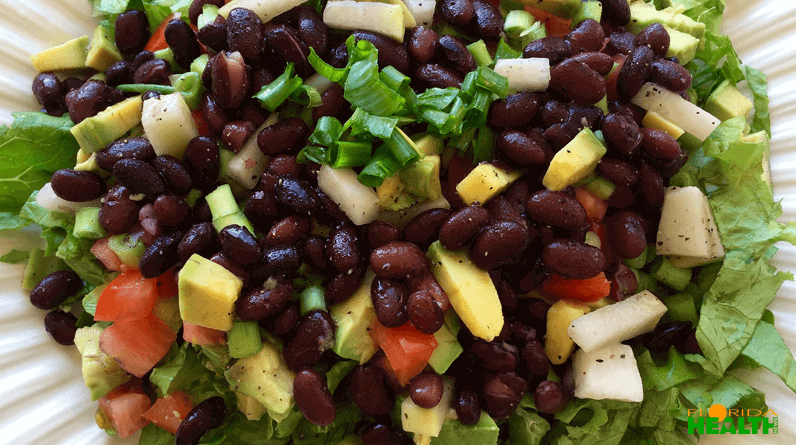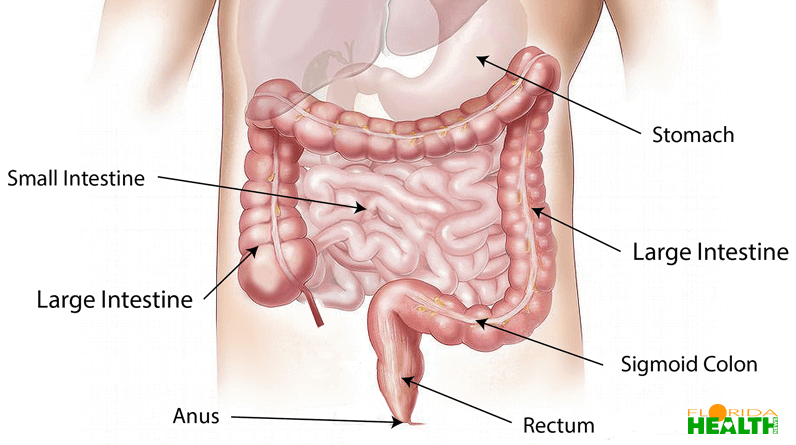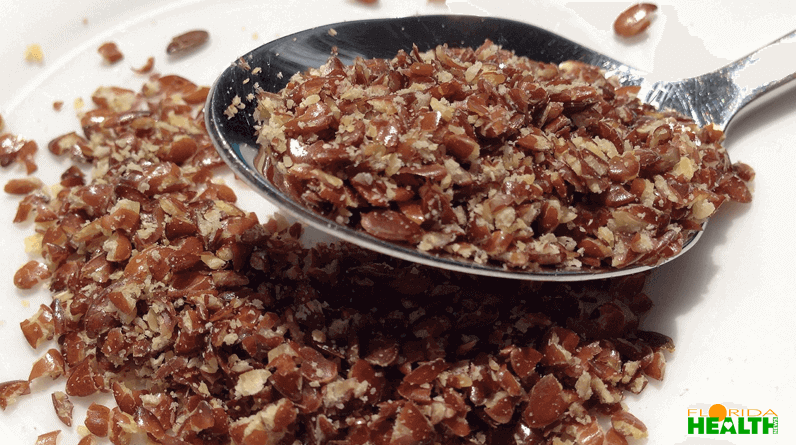
Years ago linseed was mostly sold in bags at pet shops. It is still sold there as bird food. In those days linseed was also sold in supermarkets, but you had to look carefully. Thanks to the superfood trend, linseed has been elevated to a superfood status and has made an explosive comeback. Everyone seems to be nibbling on linseed nowadays. It is known for its many health benefits, such as the beneficial effect on digestion, the omega 3 fatty acids, and the beneficial effect on bowel movements. However, there are also many stories circulating about the possible adverse effects of flaxseed on our health. What about linseed and what does science say?
What Is Linseed (Flaxseed)?
Linseed is a small flat seed from the flax plant, called ” Linum usitatisimum “. It is one of the oldest fiber plants in the world and grows with beautiful white or blue flowers. The colors of the flowers and the seed tell a lot about the variety. For example, one plant produces brown seeds, the other yellow seeds. Not all plants are used for the production of linseed and linseed oil. For example, “fiber flax” is used for textile linen.
Oil flax is used for the extraction of linseed oils. The residue from the production of oils ( linseed cake) is used as animal feed. The cyanide (hydrocyanic acid) found in linseed remains in the cake (pulp) when the oil is pressed. Any small residues remaining in the oil do not pose a safety problem. About 40% of linseed comes from Canada. The remaining cultivation takes place in countries such as China, India, the United States, and Germany.
Health and Nutritional Benefits
Linseed is incredibly healthy. It is a source of vitamins and minerals, dietary fiber, and…omega -3 fatty acids. The latter makes the seed quite unique. Although this form of omega 3 ( ALA) is NOT THE SAME AS THE FATS WE APPEAR IN ANIMAL PRODUCTS (such as oily fish EPA + DHA) they are useful for our health and can partly be converted into a healthy working body in EPA + DHA.
Linseed has been researched a lot. Various studies have shown that flaxseed can in some cases work against various forms of cancer, cardiovascular diseases, kidney problems, and type 2 diabetes. Flaxseed contains lignans. These act as antioxidants and can inhibit the development of cancer. They prevent the development of new blood vessels in the tumor Flaxseed is also effective against both diarrhea and constipation. This is possible due to the extremely high content of fiber phytoestrogens and omega 3 in the form of ALA.
One tablespoon of 10 grams of linseed contains:
- 55 calories
- 0.2 grams of carbohydrates, of which 0.2 grams of sugars
- 2 grams of protein
- 4 grams fat
- 2.8 grams of fiber
Vitamins in mineralen:
- Vitamin B1: 11% RDA
- Vitamin B2: 1% RDA
- Vitamin B3: 2% RDA
- Vitamin B6: 2% RDA
- Vitamin B11 (folic acid): 2% RDA
- Calcium: 3% RDA
- Magnesium: 10% RDA
- Potassium: 2% RDA
- Zinc: 3% RDA
- Manganese: 13% RDA
- Iron: 3% RDA
In addition to these vitamins and minerals, flaxseed also contains smaller amounts of selenium, copper, molybdenum, and phosphorus. And, as previously written, linseed is one of the richest sources of alpha-linolenic acid ( ALA) ALA is an essential fatty acid. This means that the body cannot synthesize it itself and that we have to ingest it through our diet.
Omega 3 fatty acids are important for our cell membranes, brain, immune system, and hormone system, and play a role in the prevention of cancer, cardiovascular diseases, diabetes, and high blood pressure. Besides ALA there are other essential fatty acids: the essential fish fatty acids EPA and DHA. Although flaxseed does not contain EPA and DHA, it is possible that ALA from flaxseed is converted into these substances in the body.
About 20% of ALA can be converted into EPA and 0.5% can be converted into DHA. This makes linseed less effective as a source of EPA and DHA than fresh fish, crustaceans, and shellfish. Absorption per body also plays an important role, in other words, not everybody absorbs the 20% margin. It is therefore not wise to use linseed as a substitute for omega 3. ALA in linseed can help protect the lining of the digestive tract.
Due to the high content of omega 3 fatty acids, linseed promotes the ratio of omega 6 to omega 3. This reduces the risk of various chronic diseases such as diabetes and cardiovascular diseases. ALA in flaxseed can help reduce dryness and flaking of skin and hair due to the essential fats and B vitamins. It can also reduce symptoms of acne, rosacea (bright red discoloration on the face), and eczema.
Vegetable omega 3 (such as linseed) is difficult for the body to activate.
That’s why the animal variant is superior. Rich animal sources of omega 3 are salmon, mackerel, herring, and the products of grass-fed animals. By the way, the fish do not produce EPA and DHA themselves, but they get them directly from algae.
Linseed contains soluble and insoluble fibers. This has a very beneficial effect on bowel movements and digestion. The fibers support the colon thanks to good intestinal bacteria and give us a full and satiated feeling, which greatly reduces our need for more (overeating) food. Because the bowel movement can improve when using linseed, it can prevent clogging.
Flaxseed is rich in antioxidants. Antioxidants offer the body protection against harmful substances. These harmful substances play a role in aging processes and in cell and tissue damage. The polyphenols in flaxseed have an anti-inflammatory effect and help with colds and flu.
WHOLE OR CRUSHED?
You can buy linseed in various forms:
- Whole
- Broken
- Ground
- Mixed with other seeds
Go For Whole Linseed
To benefit from the omega 3 fatty acids, the whole seeds are best. These have not yet been oxidized. When the seeds are bruised, the oxidation process begins. Broken and ground linseed therefore always contains less omega 3 ( ALA).
The amount of harmful compounds that are absorbed by the body is greater the finer the linseed is ground. The more finely ground the flaxseed is, the less healthy it is. So choose the whole linseed.
But……in order to release the omega 3 most effectively, linseed has to be crushed. This also promotes digestion. Crush the whole linseed in the crusher before use. Do not do this hours or a day in advance, but at the moment you want to use the linseed. In this way, you keep most of the nutritional qualities.
There are also many seed mixes available, which contain linseed. These are usually ground linseed, and other ground seeds such as chia seed and sesame seed. These are already oxidized. And therefore not really healthy option. You have also read before, that ground seeds contain more cyanide. All in all, reason to choose for the whole linseed, which you can use yourself in the mortar (crushed).
Linseed Oil
I mentioned linseed oil earlier. Linseed oil is extracted from linseed oil plants. The seeds contain about 40% oil of their own. Linseed grows on a flax plant, this plant grows all over the world and is mainly grown for the linseed oils. The linseeds are pressed to produce oil. Flaxseed oil consists of a number of other fatty acids besides the previously discussed linoleic acid:
- palmitic acid 5%
- stearic acid 2.5%
- oleic acid 16%
- linoleic acid 10-20%
- alpha linolenic acid 50%
- eicosenic acid 1%
- erucic acid 1%
LINSEED OIL IS NOT SUITABLE FOR FRYING
Linseed oil is NOT suitable for frying. Alfalinoleic acid is highly unsaturated and therefore very sensitive to oxidation. Oxidation releases harmful substances during heating. You can use it as a dressing over your salad, a dash through the yogurt, or through your green smoothie. Preferably opt for a first cold pressing, this form retains most of its flavor. Keep the oil dark and cool. Since flaxseed oil oxidizes quickly, it is handy to buy a small bottle and finish it within a few weeks after opening. And preferably buy organic linseed oil.
CONSULT A MEDICAL PROFESSIONAL IF YOU ARE ON MEDICATION
Flaxseed oil can also affect medication use. Do you want to start using linseed oil and are you taking medication? Then consult your family doctor first. Drugs that are affected by linseed oil include medicines that lower blood pressure, medicines that regulate blood glucose, and blood thinners.
Flaxseed oil is above all a healthy supplement to a healthy and balanced diet. Handle it wisely. And don’t use it as a standard, take breaks just like flaxseed. It is also NOT a FULL substitute for omega 3. (ALA) but can be a fine supplement. The normal dose is up to three times a day 1 tablespoon of linseed oil, but make sure you read the packaging of the linseed oil you bought to be sure.
If you ingest too much flaxseed oil you can get greasy skin, pimples, and even oily stools. If you don’t like the taste, mix the flaxseed oil with water, green tea, or fruit juice. Because it is an oil you will not be able to mix it very well, but if the taste is a problem for you this method will certainly help. It can also help to take liquid flaxseed oil with your food or at least a snack to make the aftertaste of the oil disappear.
How Do You Use Flaxseed?
Flaxseed can be used in many different ways. You can mix it with many dishes and other things, but you can also use it for decoration, as a garnish, and you can make a very rich gel out of it. You can make it by mixing some linseed with water and boiling it, then sieving it. In addition, you can use linseed as a binding agent in baked goods such as bread, cakes, and cakes to replace eggs. By soaking some linseed in water, a glue-like substance is formed that can be used as a binder in bakers.
Possible Health Risks
The healing power of linseed is indisputable. Flaxseed is healthy but there are also risks to this product. There are many bio-identical hormones in the form of phytoestrogens in linseed. That is a hormone that women use a little more than men. That’s why orthomolecular therapists advise against taking linseed for men. There is also a risk of abdominal pain if you take flaxseed in unsoaked form.
Linseed absorbs a lot of moisture. When this fluid is absorbed from the stomach, a fluid deficiency can occur. That is why linseed should always be soaked for 12 hours before you eat it. Furthermore, linseed oil can oxidize quickly. It then gets a dirty smell of slightly spoiled fish.
Flaxseed contains cyanogenic substances. This is converted in our body into the harmful toxin cyanide. It is therefore not wise to CONSUME MORE THAN 45 GRAM Flaxseed BY DAY. In addition, it is wise to always take linseed with plenty of water. Limited and temporary use of 15 to 45 grams per day does not cause any problems in principle. Nevertheless, caution is advised.
Too high doses of cyanide can lead to respiratory problems and eventually cardiac arrest. Poisoning can also occur due to improper use of plants containing cyanogens. It is also not recommended to use linseed on a daily basis. Pause the use of linseed regularly. The fibers can make the intestines “lazy”, which can cause intestinal complaints.
Other Non-health Related Uses of Linseed – Treating Wood, Metal, and Concrete
Linseed oil is a proven agent for impregnating and treating wood. The properties of the oil provide durable protection against weather influences, such as moisture. Treatment with linseed oil ensures that wood does not rot. Linseed oil also protects wooden surfaces against dehydration by, for example, sunlight or heat. Another handy tip: put your brushes in linseed oil after painting. Then they won’t dry out and you can keep them longer!
Also suitable for metal
Flaxseed oil is not only a supreme means of protecting wood; you can also use it for metal surfaces or objects. A thin layer protects metal from rust.
Treat (drifting) concrete or sand cement floor
And certainly also (old) concrete floors are worth treating with linseed oil. The oil has a strong impregnating effect and absorbs into the top layer of the concrete, so you can prevent the ‘drifting’ of your old floor. Again, before treatment, the concrete surface must be clean, dry, and grease-free. The first layer of linseed oil should be soaked in for at least half an hour.
Resources:
https://www.ncbi.nlm.nih.gov/pubmed/15897583
LPI Edu
NIH
Wikipedia
Verfbestelsite

Carl Riedel is an esteemed online researcher and writer, specializing in the intersection of technology and wellness. As a member of the International Association of Therapists, Carl brings a unique perspective to his work, skillfully integrating insights from therapy and digital trends. His articles help readers navigate the complexities of the digital age with an emphasis on promoting mental and emotional well-being.



